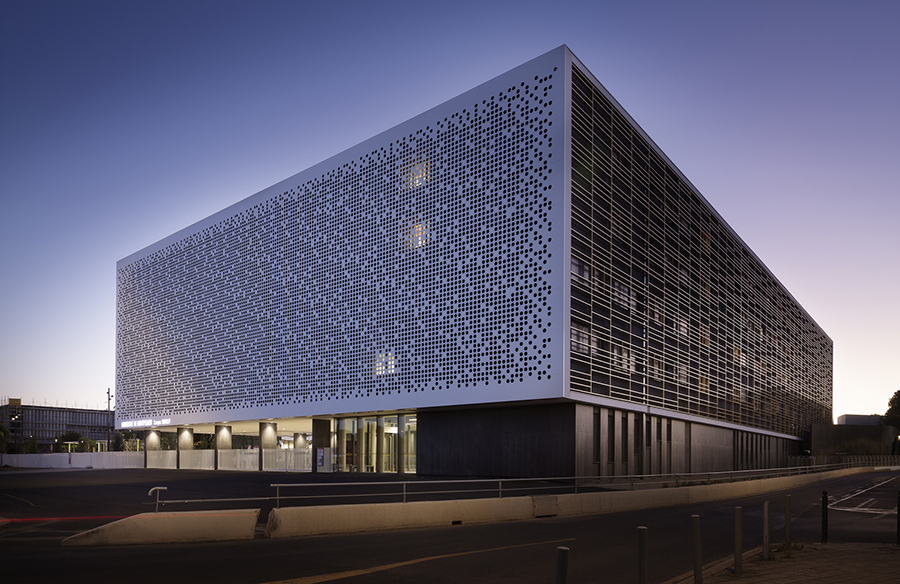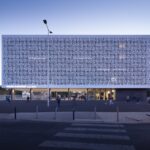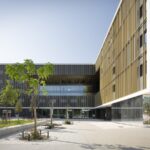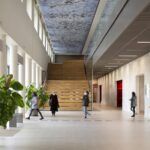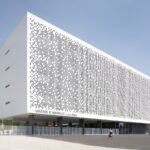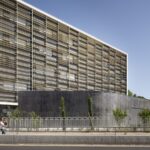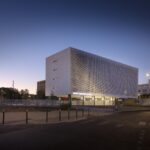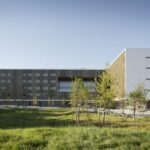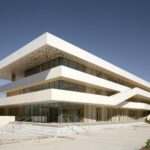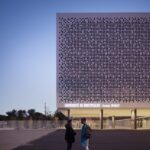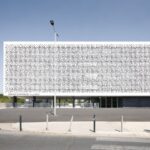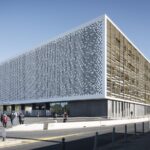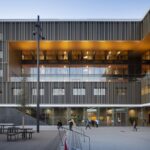Introduction
The University of Montpellier Village des Sciences, designed by BPA ARCHITECTURE, stands as a testament to innovative campus redevelopment. Resulting from the Campus Plan initiated in 2008, this project reimagines the teaching facilities of the University of Montpellier 2, consolidating two buildings to replace five outdated structures.

Redefining Campus Architecture
The ambitious project confronts the challenge of preserving the original master plan envisioned by Rene Egger while adapting to site constraints. Divided into two volumes, one housing shared spaces and the other serving as the bio-ecology center, the design balances the need for functionality with a commitment to maintaining an open and transparent campus environment.
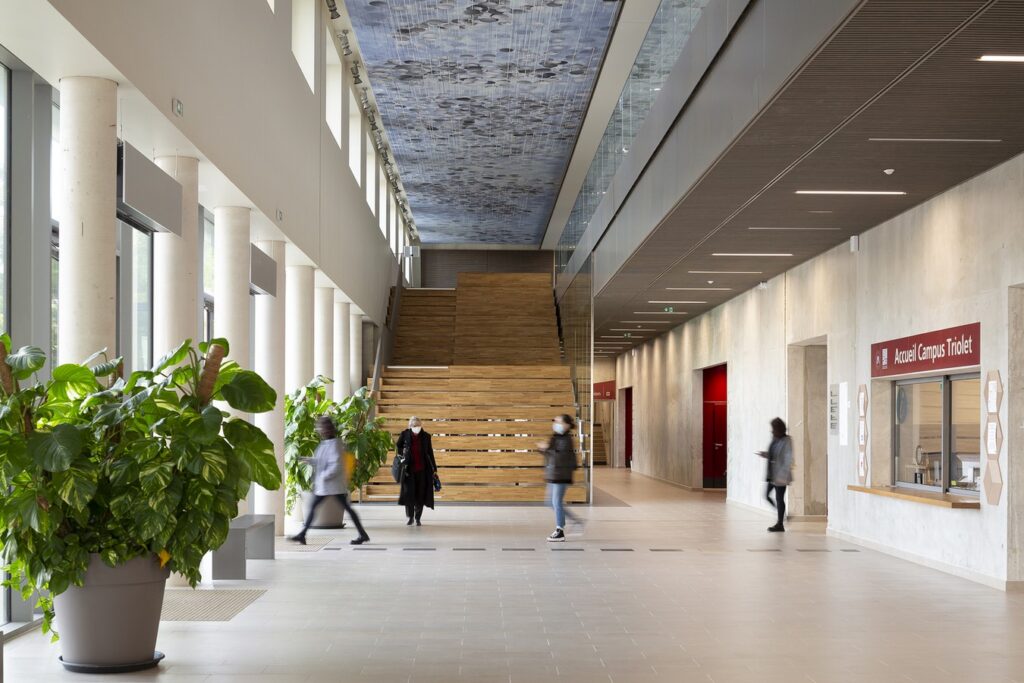
Embracing Transparency and Spatial Fluidity
At the heart of the design is a dedication to transparency, both in material choice and spatial configuration. The main volume, elevated from the ground, creates a sense of lightness and openness. Reflective metal cladding on emergency staircases enhances the building’s visual dynamism, while double-height loggias blur the boundaries between interior and exterior spaces, extending the working environment towards the surrounding gardens.
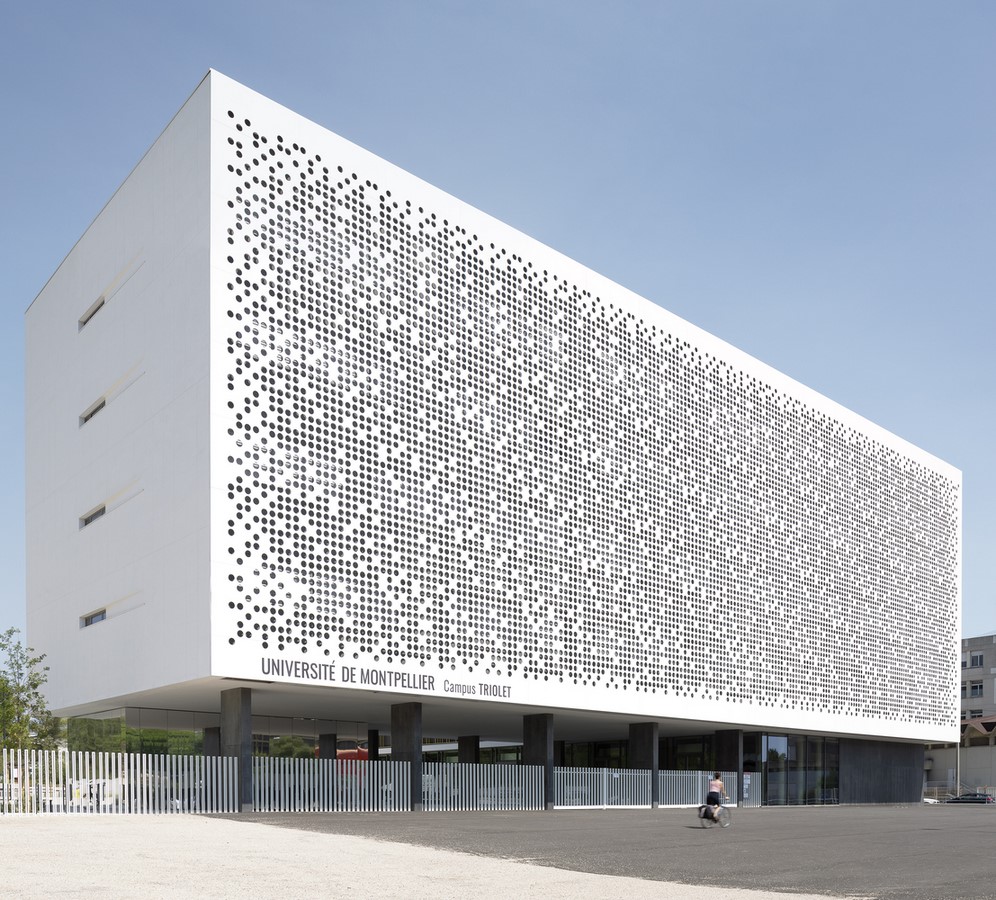
Harmonizing Contemporary and Mediterranean Aesthetics
Unified by identical materials, the two buildings frame the central square with a contemporary yet timeless aesthetic. Drawing inspiration from Mediterranean architecture, the design exudes a sense of warmth and belonging. Positioned strategically within the campus, the project redefines the university’s presence within the city, serving as a dynamic and inviting gateway to knowledge and learning.
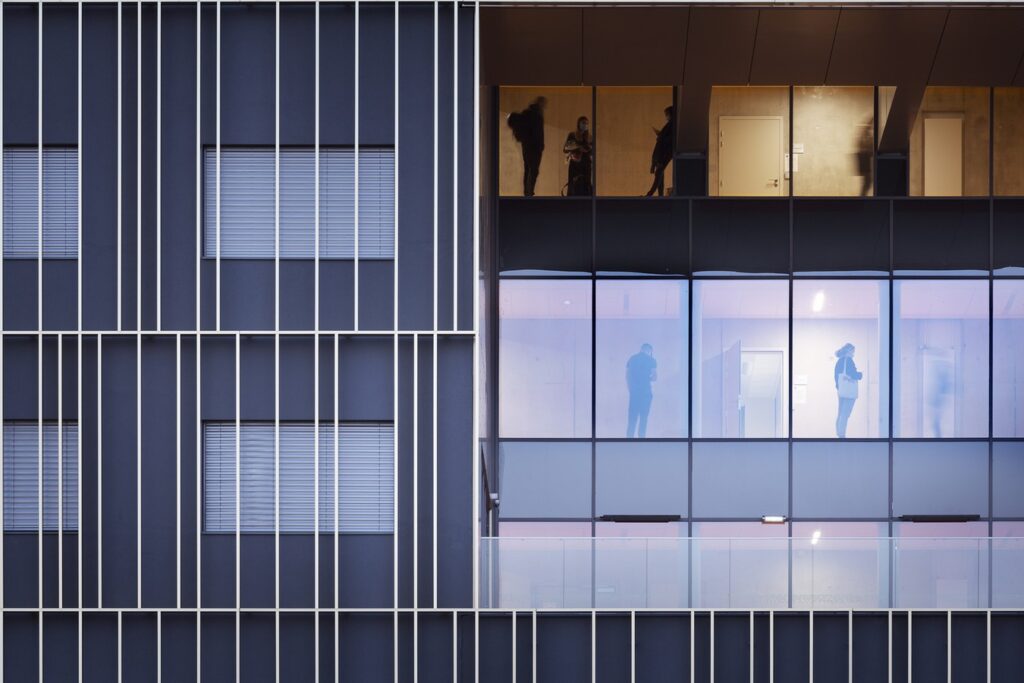
Conclusion: A Vision for the Future
The University of Montpellier Village des Sciences represents more than just a physical transformation—it embodies a vision for the future of education. By seamlessly integrating modern design principles with the rich heritage of its surroundings, the project creates an environment that is not only functional but also inspiring. As a beacon of innovation and openness, it sets a new standard for academic architecture in the 21st century.


